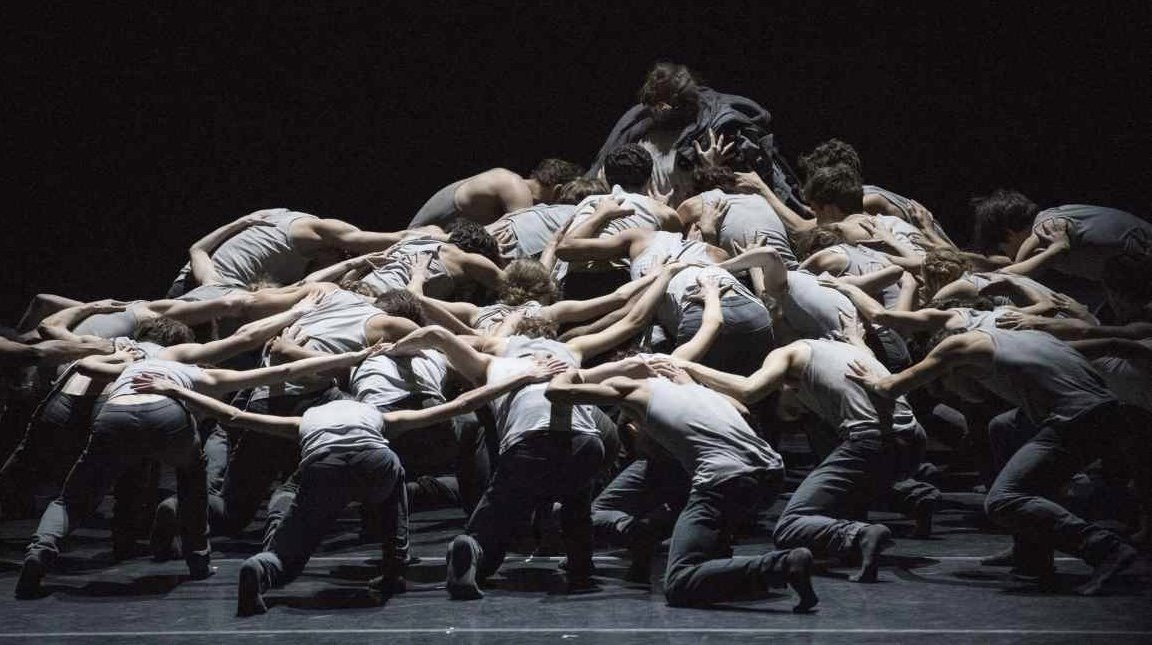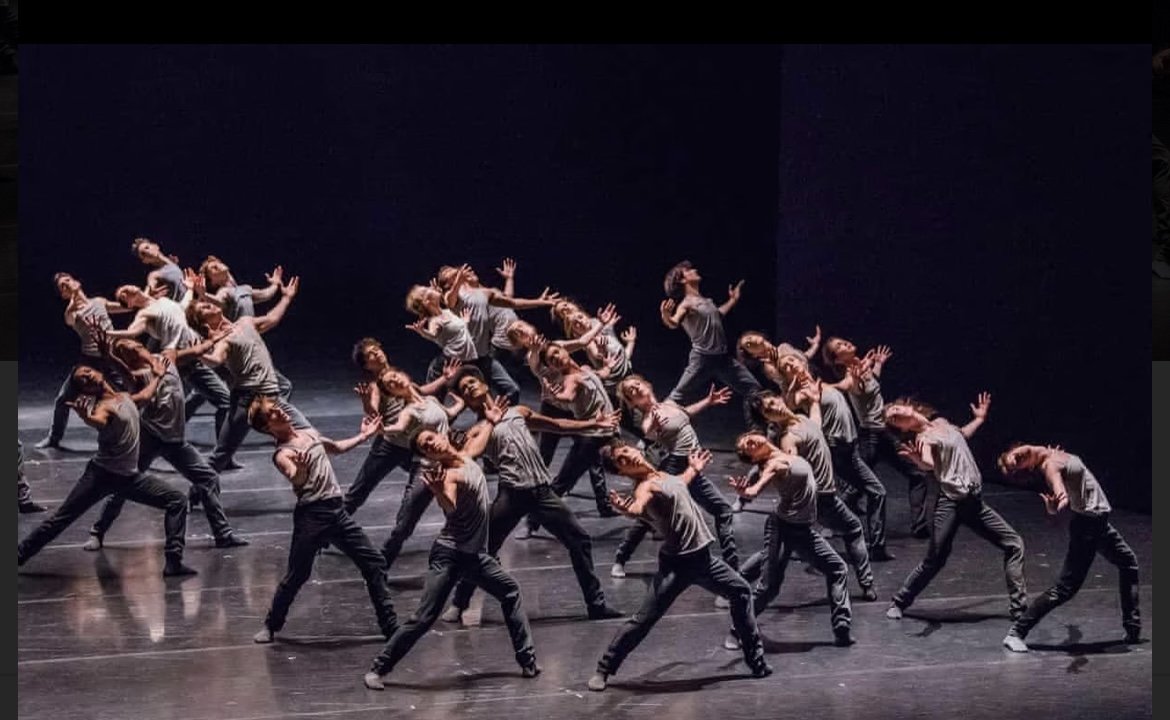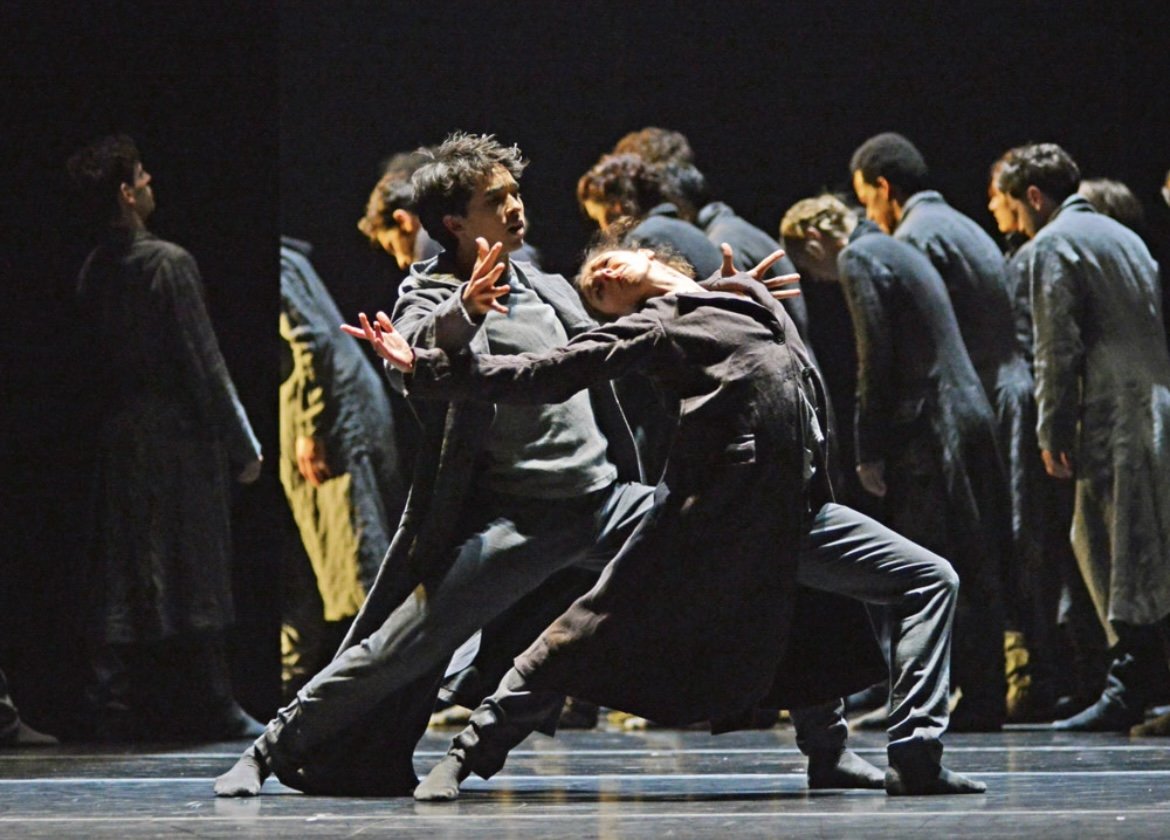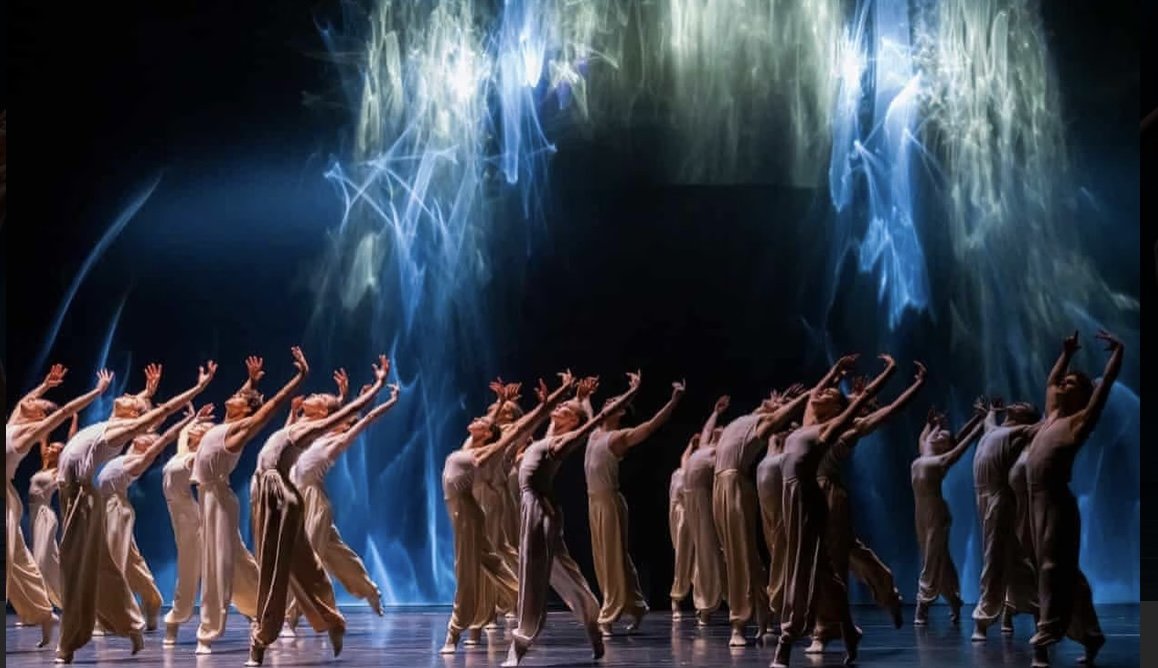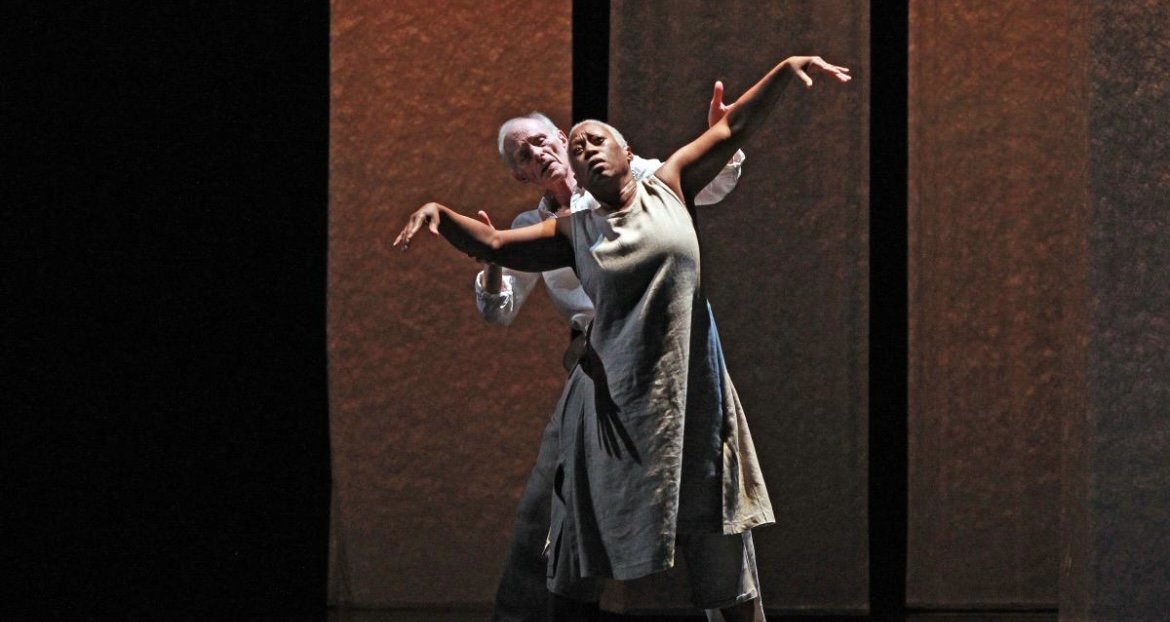Crystal Pite and Designer Suffering
Nothing about Light of Passage, Crystal Pite’s new three-part creation for the Royal Ballet at Covent Garden, feels spontaneous; nothing about it feels sincere. Instead, everything feels intensely choreographed, earnest, showily expressionistic. Pite’s choreography is magisterial in its way – for some people, she is one of today’s great choreographers - but it reminds me of a line written in March 1939 by Edwin Denby about some disturbing tendencies in inferior examples of American modern dance: “I smell a Führer somewhere.”
That, some will say, is the point. We live in disturbing times. When Pite presented Flight Pattern, the first and longest section of Light of Passage, as an independent ballet a few years ago, it was a well-drilled display of Suffering by Numbers, on a massive scale, which she claimed was about the European migrant crisis. Well-disciplined queues of unhappy pilgrims ran or trudged across the stage with various kinds of energetically anguished upper-body gestures: Designer Suffering. Now that Light of Passage has two more sections, the Royal Ballet’s director, Kevin O’Hare, introduces it in the programme by writing of Pite’s “deep engagement through movement with the complexities of human experience,” “existential tensions,” and “a path from childhood through to our own ultimate border crossing at the end of life.”
Actually, human experience in Passage of Light has no complexities whatsoever. What few meanings it has are crude, obvious, unoriginal, and oft-repeated. We start young (the second part features six children, who are guided, supported, and lifted by the grown-ups), we end old (the third movement features one elderly man, who is subsequently accompanied and supported by one elderly woman), and in between we have no mirth, no joie de vivre, and no subtlety, though at least one pair of us is same-sex rather than opposite-sex.
All the movements are ponderous and large-scale. No entrechat-cinq or brisés in this vale of tears. The dancers are lit from above and behind: Pite is not the kind of choreographer who wants us to find interest from differentiating Luca Acri and Benjamin Ella (who I think get the same-sex duet) from Isabel Lubach and Matthew Ball (who get the last of several opposite-sex duets). In a ballet by Frederick Ashton, the differences between those couples would be enthralling. Humanity on that merely human scale is not, however, on Pite’s agenda.
As could be seen in Flight Pattern, Pite handles the arithmetics, geometries, and lighting of this dreary twaddle with terrific control. It’s dirge-like, it’s miserable, but boy, has it been Choreographed! Configurations, gestures, lifts are repeated from one side of the stage to the other, and from upstage to downstage: the echo-chamber effect. Each of those poor six children, dressed in white, has to proceed, one after another, towards us along a human corridor (grown-ups in black). We get Pite’s gruesome point – even though each of these children may be an individual, their destiny must prove the same.
The music is Henryk Górecki’s Symphony of Sorrowful Songs. (By some morose quirk of artistic planning, this score reaches London’s opera houses twice over in the 2022-2023: English National Opera presents it in April-May 2023.) This is ultra-slow, anti-dance music, which Pite handles by fitting massive movements to minor pulsations and forceful movement constructions to subdued sound sequences. Most of her choreography is far from fast, but it’s so tightly jam-packed onto this often funereal Górecki symphony that it looks positively brisk and business-like.
Passage of Light was greeted with rapture by Tuesday 18’s opening-night audience. Some of this enthusiasm may be attributed to the usual first-night nonsense, but much was surely sincere. The British appetite for heavy-handed expressionism in ballet goes curiously deep. True, you won’t find much expressionism in the work of Britain’s two greatest dance-makers, Frederick Ashton and Richard Alston, but Pite’s heavy emphasis on meaning fits right into a tradition shaped by Ninette de Valois, Antony Tudor, Kenneth MacMillan, up to Matthew Bourne and Hofesh Shechter today. (Some of those figures made some masterpieces, though generally by resisting expressionism rather than indulging it.) Oh those heavily repeated and rhythmically reinforced upper-body gestures!
Pite even recycles one of the more familiar devices from American modern dance, whereby a soloist (here one of those poor children) is walked up a human staircase. In her way, Pite is one of the most impressive choreographers today, but the Big Brother organisational skills of her work are dehumanising. Never mind humans: just look at all this Choreography about Humanity.
<First published by “Slipped Disc” in October 2022.
In April 2023, English National Opera produced another staging of Górecki’s “Symphony of Sorrowful Songs”, this one directed by Isabella Bywater. Interestingly, it did far more to realise both the micro- and the macro- aspects of the symphony, and did far more to make Górecki’s conception far more enthralling. For copyright reasons, I cannot reproduce here my April 28 “Financial Times” review, but it can be found at www.ft.com >
@Alastair Macaulay 2022
1: The Royal Ballet in Crystal Pite’s “Flight Pattern” at Covent Garden. Photograph: Alastair Muir.
2: The Royal Ballet in Crystal Pite’s “Flight Pattern” at Covent Garden. Photograph: Tristram Kenton.
3: The Royal Ballet in Crystal Pite’s “Flight Pattern” at Covent Garden. Photograph: Tristram Kenton.
4: The Royal Ballet in Crystal Pite’s “Flight Pattern” at Covent Garden. Photograph: Dave Morgan.
5: The Royal Ballet in Crystal Pite’s “Light of Passage” at Covent Garden. Left to right: Isabella Gasparini, Solomon Golding, Joseph Sissons, Kristen McNally and Lukas Bjorneboe Brandsred. Photograph: Dave Morgan.
6: Benjamin Ella and Isabella Gasparini in Crystal Pite’s “Flight Pattern”. Photograph: Dave Morgan.
7: The Royal Ballet in Crystal Pite’s “Light of Passage”. Photograph: Tristram Kenton.
8: The Royal Ballet in “Covenant”, the middle section of Crystal Pite’s “Light of Passage”. Photograph: Tristram Kenton.
9: Christopher Havell and Isidora Barbara Joseph in the final “Passage” part of Crystal Pite’s “Light of Passage”with the Royal Ballet at Covent Garden. Photograph: Marilyn Kingwill.
10: The Royal Ballet in “Passage”, the third and final section of Crystal Pite’s “Light of Passage”. Photograph: Tristram Kenton.
